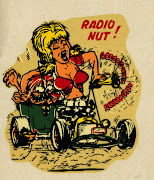Champion Jack really changes his musical style for his run of singles on the King label. The intensity is significantly lessened - the rollicking groove of the Red Robin recordings becomes much more of a laid back stroll. There is far more space between instruments, and both he and his accompanists play with far more restraint and deliberation. The overall effect is a real "uptowning" of his musical sound.
In direct contrast to this musical style change for the "sophisticated" is CJD's vocal persona and songwriting. These are the first recordings where the hick persona and folksy, spoken-word storytelling style come front and center. He rarely sings on his King recordings, instead musing and making asides, jokes and observations while the music grooves. To make matters even more bizarre, on about half of his King records he affects/perfects his "harelip" voice - a slurred, diffi-oot oo unnuhsan bit of jive that was apparently quite popular with record buyers at the time.
the harelippiest
The end result of all of these changes is one of the most unique series of blues 45s I know about, most of which are collected on the strangely coherent Champion Jack Dupree Sings the Blues, his first full-length LP.
"Chew it up to the elbow, boy!"
Part of the change in sound is because of a change in the band, namely the guitar player. Jack and Brownie McGhee had already moonlit for King, unsurprisingly, as a collective persona named "Big Tom Collins" (I assume they had plenty of big Tom Collins when they came up with that name). McGhee would sing on some of the sides, Dupree on the other. While the vocal style of "Watchin' My Stuff" is a lot like the recordings he'd do under his own name at King, soundwise the band is pure Red Robin.
1951
vs.
1955
By the time he starts recording as CJD for King in 1953, Brownie McGhee has lit out for good with Sonny Terry to do his own thing. His replacement, on about half of the King sessions, was the world's greatest rock and roll session guitarist, fellow orphan and future fellow ex-pat Mr. Mickey Baker!
 |
| Mickey and Jack in the 60s |
 |
| Thank you Mr. Sears and Roebuck! |
hey hey hey - keep on walkin, baby!
I love the King recordings and even though I could find something self-evident to say about just about all of them I'll spare you that. But I have to talk about one more, the King version of "Stumbling Block".
Unlike Jack's other great dance 45s, which drag the dancers onto the floor with sheer drive and force, this version of "Stumbling Block" is all slow burn, mounting tension and slyness, underlined by the fantastic Baker guitar hook that builds and builds until he finally breaks it up with a fantastic, oddly abstract solo. Result = totally sexy dance track.
Dupree and Baker obviously had a real connection, and they recorded again together in Europe in the 1960s. We'll get to that in due course.
*It has come to my attention that Mr. Bear is actually the foot on Walkin' the Blues
















0 Comments:
Post a Comment